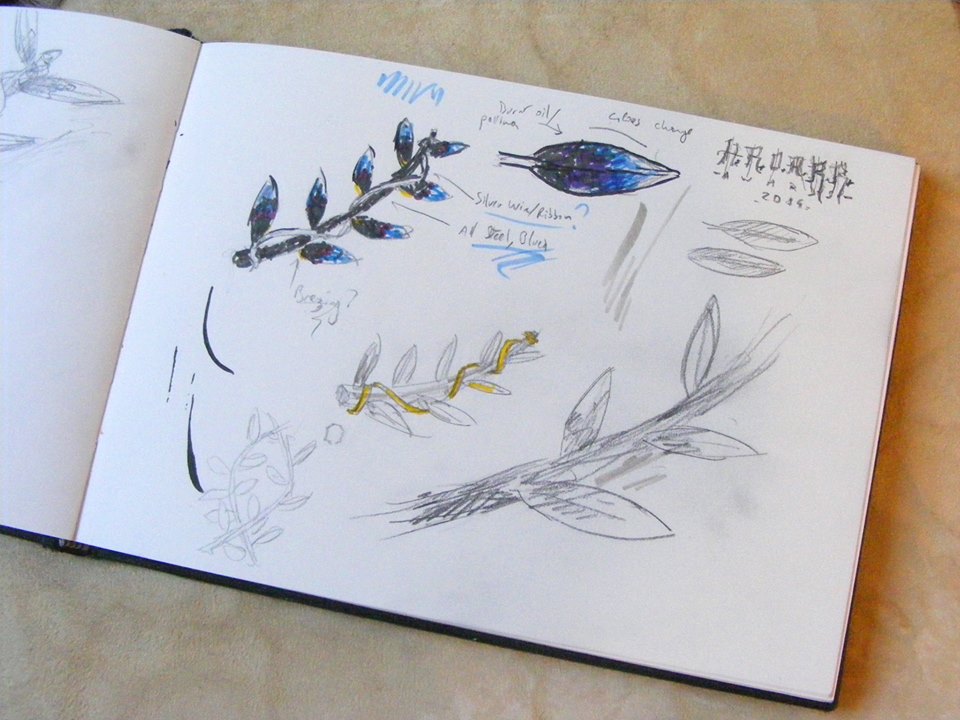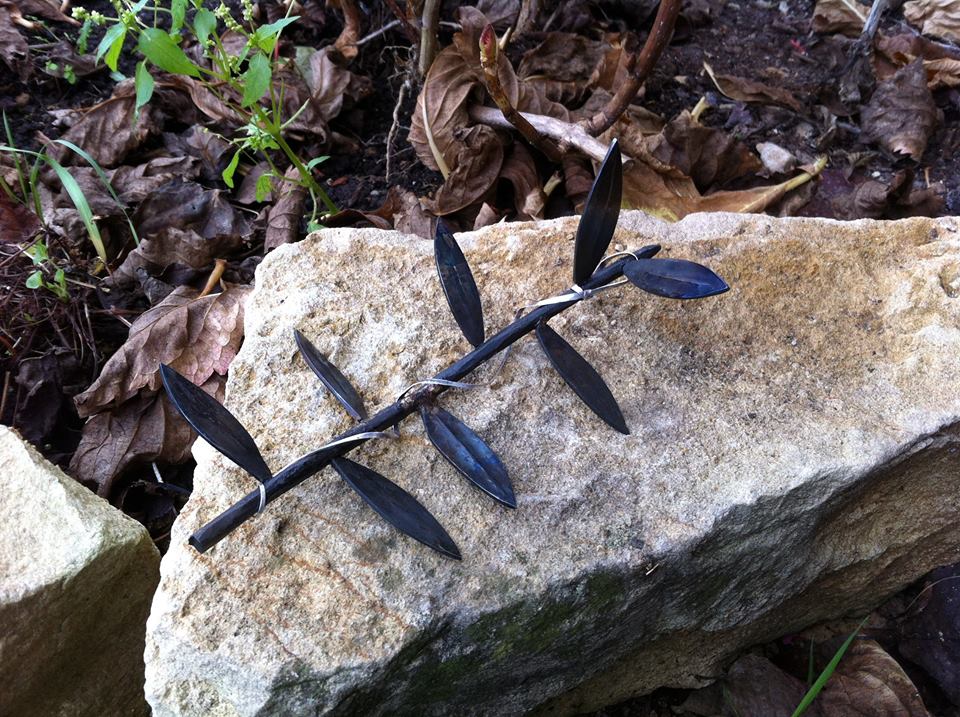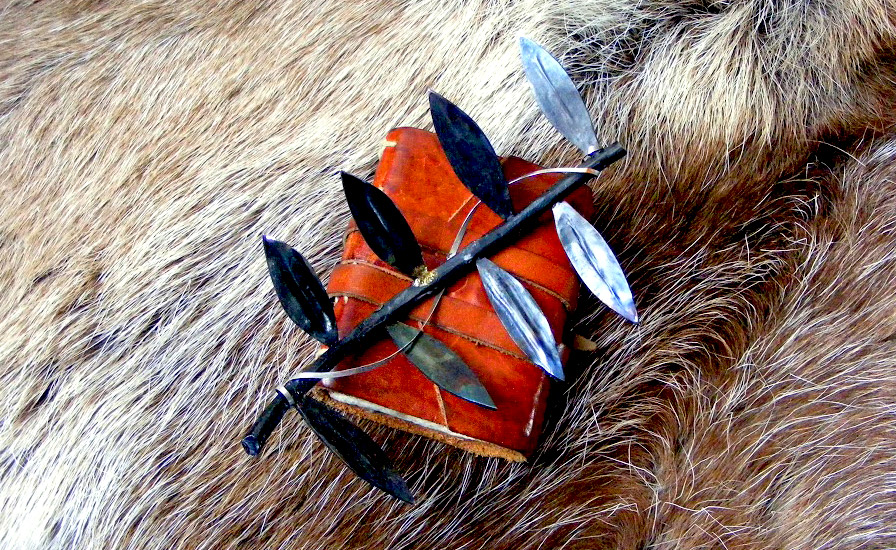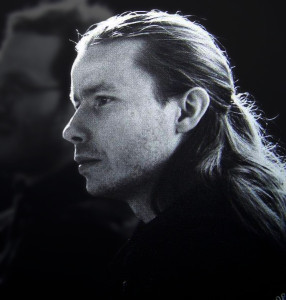The Laurel
I am immensely proud to have been given the opportunity to play a part – as modest as it is – in this year’s HEMA Scholar Awards. Each year, and I hope there will be many more, selected individuals are acclaimed for their contribution to Historical European Martial Arts, as researchers, instructors, scholars, and martial artists.
Roger Norling came to me and asked me after seeing the Steel Rose you’ll find somewhere on this site if it was within my possibilities to make a few laurel twigs… and I just said yes.
It was not only a wonderful occasion to contribute to the admirable endeavour that are the HEMA Scholar Awards, but also a nice stray from edges and points and the like, and an unexpected chance at playing with metal and its possibilities and gearing my creativity and energy to something quite unusual for me – or, rather, to which for some reason (lots of reasons actually) I did not dare to devote any time so far.

Steel itself is a wonderful matter, an entity, really a thing of its own, as it allowed me to discover through the various aspects of my work. Steel is what weapons are made of – the very weapons I’m trying to reproduce or recreate. Therefore the award had to be steel – as it would through its very weight, its density, its cold touch that still can be warmed by human hands, and through the fact that it’s what swords are made of, thus grounding the awardee to the matter itself and to the sword.
Steel can rust ; but that was not in the scope to have rust showing, not in the plan I had for these items, although these objects might very well rust if not cared after – but so could our minds and bodies and martial skills, after all. So yes, maybe some day these twigs will turn all brown and red, as time goes by and as it belongs to all and everything : fade away, rust away – for it is part of the magic of steel to have this great strength, at the price of a shorter life.
 But steel can patinate, passing through fire and oil, through flame and smoke and cover its surface with dark luster – and I wanted these to bear the mark left by fire – the one that burns in the heart of a martial artist – and hammer, the hammer of the Mind, shaping raw steel under the strikes of its will, guided by Knowledge, cooled by Skill. The resut is still dark, however – or, rather, both raw and quiet.
But steel can patinate, passing through fire and oil, through flame and smoke and cover its surface with dark luster – and I wanted these to bear the mark left by fire – the one that burns in the heart of a martial artist – and hammer, the hammer of the Mind, shaping raw steel under the strikes of its will, guided by Knowledge, cooled by Skill. The resut is still dark, however – or, rather, both raw and quiet.
The Twig had to have leaves, of course. Some of them needed brazing – brass brazing, in that case, which on a technical level was not unexpected as the stem of the leaves could easily burn in the fire and need extra strenghtening to keep them attached to the branch. I see the brass highlights as symbols of the help you get from outside, to keep what comes from you, what makes you what and who you are and what you give to others, attached to yourself. The sense of community in HEMA is a strong thing, and finds its place on these awards through these raw patches of brass, themselves submitted to the same fire than what they help keeping together.

And from these leaves I wanted light to shine, colours to emerge – and steel does this : when carefully heated, it covers itself with bright hues of varying colours, through the changes if incoming and reflected lightwave frequencies. The leaves of the twig, sprouting from its modest core, thus change and alter – in an unexpected, positive way – that light that comes to them and shines from them.
And the silver wire, delicately twisted around them all, binds them together without crushing or restricting them. It is a fragile thing – a thing that shines bright also.
And that’s it.
Dr. Fabrice Cognot
Bladesmith
www.historicalbladesmith.com

